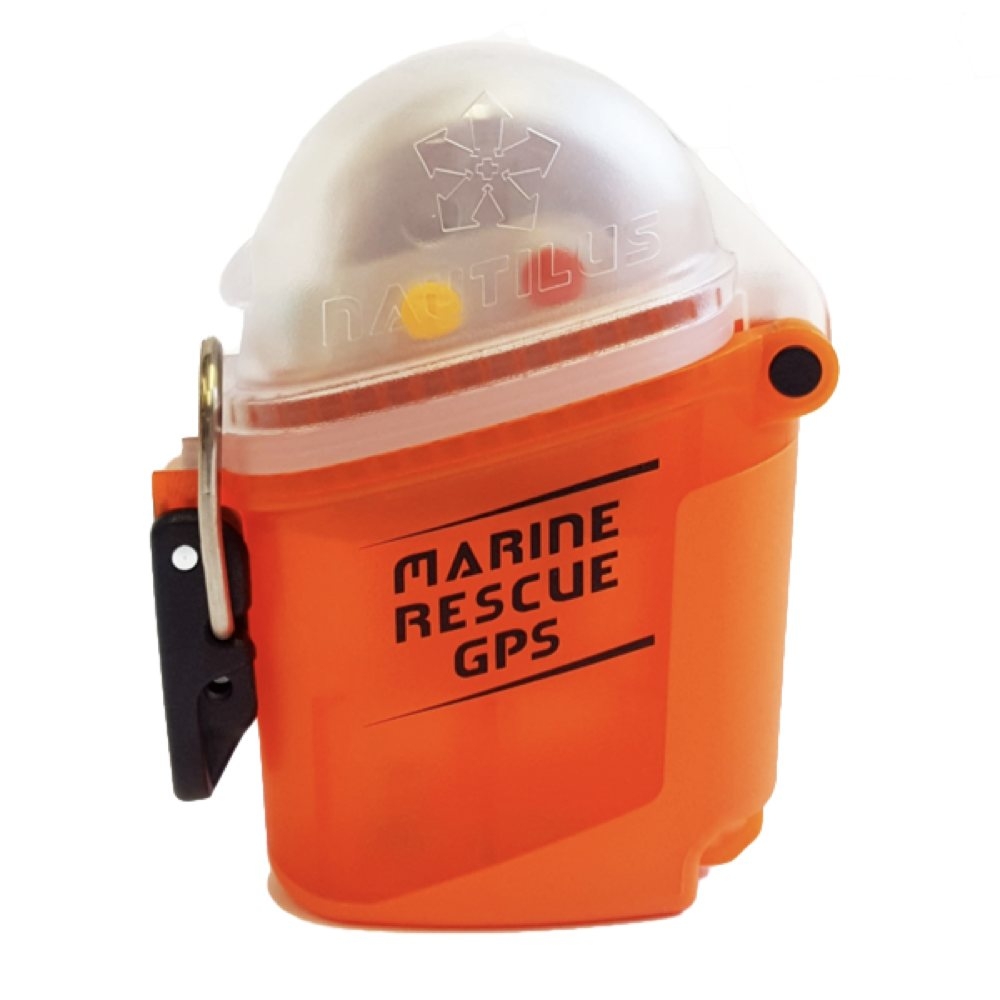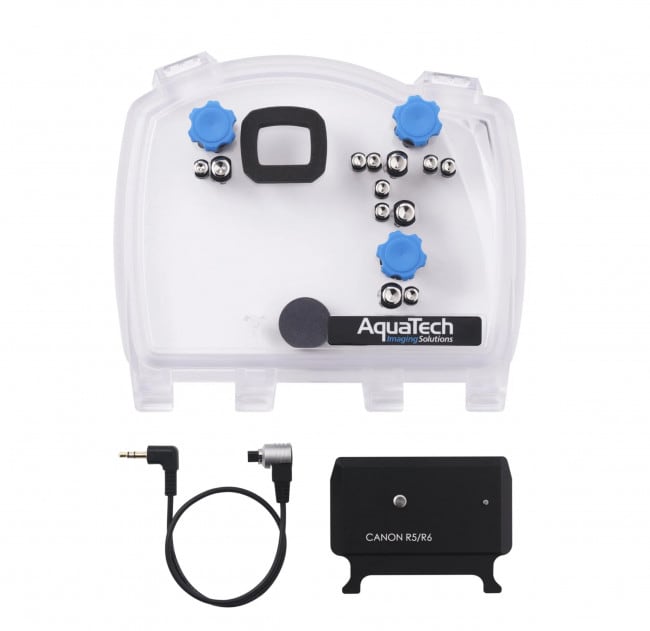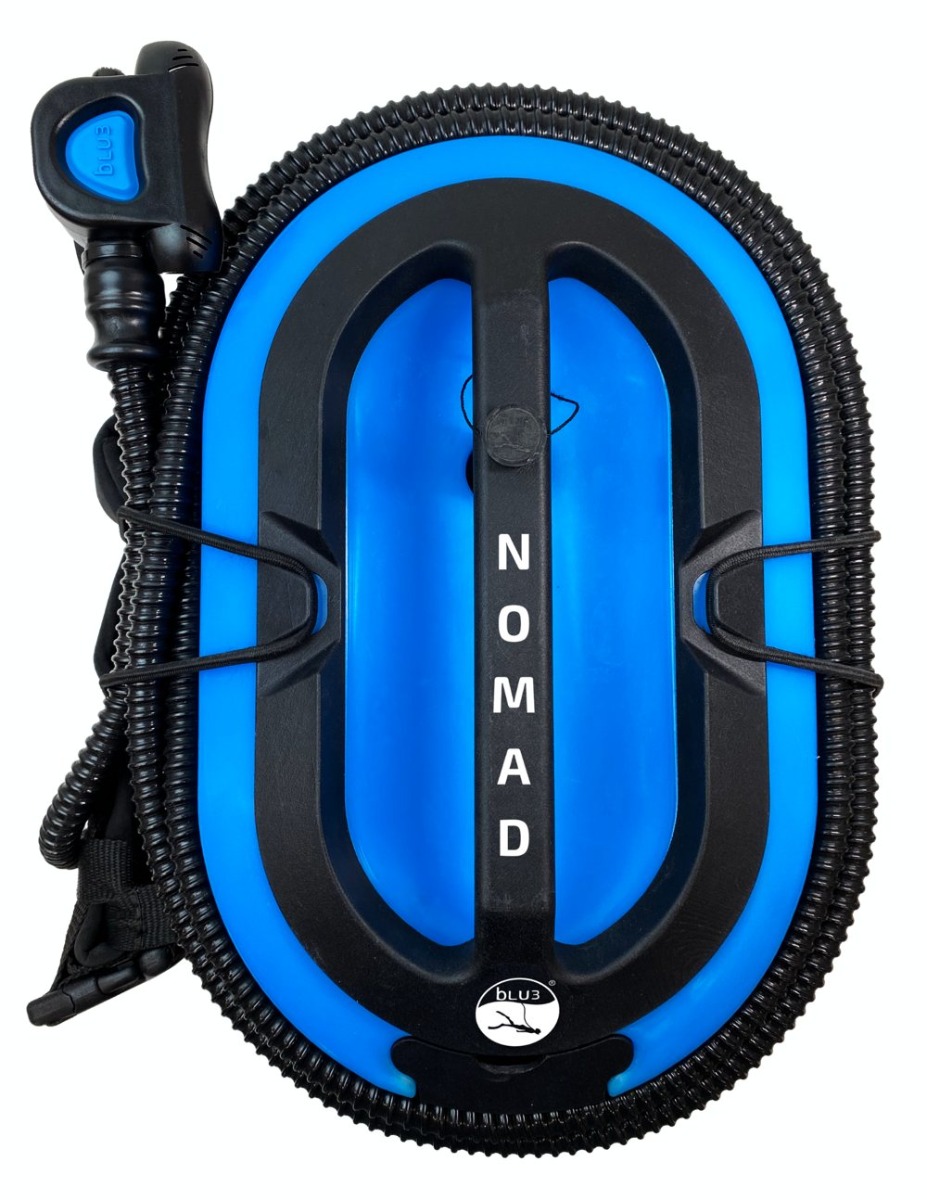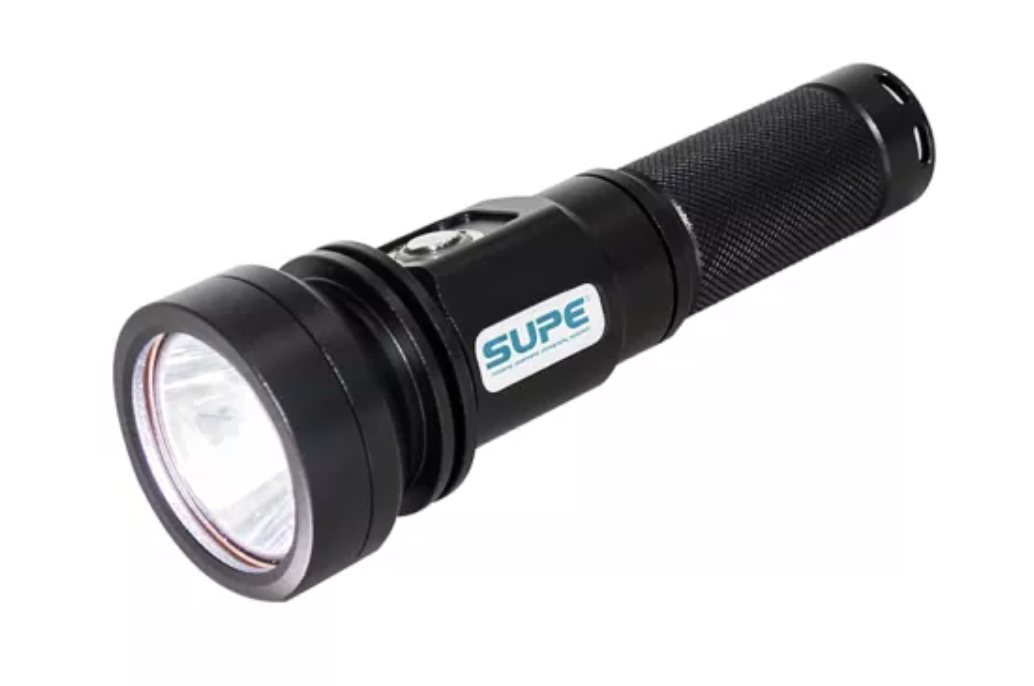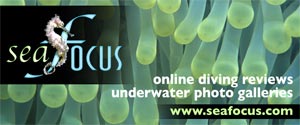- Home
- Directory
- Shop
- Underwater Cameras - Photographic Accessories
- Smartphone Housings
- Sea Scooters
- Hookah Dive Systems
- Underwater Metal Detectors
- Dive Gear
- Dive Accessories
- Diving DVD & Blu-Ray Discs
- Diving Books
- Underwater Drones
- Drones
- Subscriptions - Magazines
- Protective Cases
- Corrective Lenses
- Dive Wear
- Underwater Membership
- Assistive Technology - NDIS
- On Sale
- Underwater Gift Cards
- Underwater Art
- Power Stations
- Underwater Bargain Bin
- Brands
- 10bar
- AOI
- AquaTech
- AxisGo
- Backscatter Underwater Video and Photo
- BLU3
- Cayago
- Chasing
- Cinebags
- Digipower
- DJI
- Dyron
- Edge Smart Drive
- Eneloop
- Energizer
- Exotech Innovations
- Fantasea
- Fotocore
- Garmin
- Geneinno
- GoPro
- Hagul
- Hydro Sapiens
- Hydrotac
- Ikelite
- Indigo Industries
- Inon
- Insta360
- Intova
- Isotta Housings
- Jobe
- JOBY
- Kraken Sports
- LEFEET
- Mirage Dive
- Nautica Seascooters
- Nautilus Lifeline
- NautiSmart
- Nitecore
- Nokta Makro
- Oceanic
- Olympus
- OM System
- Orca Torch
- Paralenz
- PowerDive
- QYSEA
- Scubajet
- Scubalamp
- Sea & Sea
- SeaDoo Seascooter
- SeaLife
- Seavu
- Shark Shield
- Sherwood Scuba
- Spare Air
- StickTite
- Sublue
- Suunto
- SwellPro
- T-HOUSING
- Tusa
- U.N Photographics
- Venture Heat
- XTAR
- Yamaha Seascooter
- Youcan Robot
Reefs
Contributed by Walter Starck
Coral reefs are very special places. They are the oldest richest natural communities on our planet. In them, that most wondrous and mysterious of all natural phenomena, life, has found its fullest expression. Nowhere else can one find so many diverse creatures living so closely together in such abundance. Complementing and enhancing this extraordinary intensity of life is its exquisite beauty of form, color and motion. This is truly nature's richest realm, a fairytale world beyond imagining were it not real.
 On
a coral reef one can find, all together at the same place and time, living representatives
of all the major levels of over a billion years of life's evolution on our planet.
The entire spectrum of being is present from blue-green algae and bacteria through
all of the numerous types of invertebrate animals to fishes, reptiles, birds,
and even mammals with brains larger and more complex than our own (whales and
dolphins).
On
a coral reef one can find, all together at the same place and time, living representatives
of all the major levels of over a billion years of life's evolution on our planet.
The entire spectrum of being is present from blue-green algae and bacteria through
all of the numerous types of invertebrate animals to fishes, reptiles, birds,
and even mammals with brains larger and more complex than our own (whales and
dolphins).
These are vastly ancient communities. Primitive coral reefs existed nearly
half a million years ago, a time predating any evidence of life on land. Though
these early reefs were quite different from modern reefs some of the same types
of creatures which inhabited them still survive on today's reefs. Many of the
genera of present day reef animals are found as fossils dating back to the  Eocene
epoch some 50,000,000 years ago and some date back to the Cretaceous period
or age of dinosaurs about 100,000,000 years ago.
Eocene
epoch some 50,000,000 years ago and some date back to the Cretaceous period
or age of dinosaurs about 100,000,000 years ago.
Even today's living reefs often have surprisingly lengthy histories. Central Pacific atolls have reef strata dating back to the Eocene and the northern portion of the Great Barrier Reef began growing in the Miocene epoch about 25,000,000 years ago. The persistence of these communities through vast spans of time with only gradual change underlies their richness. It has afforded a stable environment in which the products of evolution could survive, accumulate and fine tune themselves into the richest, most complex natural systems existing.
A Trip in a Time Machine
A dive on a coral reef is like a trip in a time machine to the world before we humans even existed. If we could somehow go back in time for ten million years we would find many of the same reefs we have today and their inhabitants would be little different from those we know. Evolution on reefs is a much more gradual process than in less stable environments where adaptation and extinction is mandated more frequently by significant changes in the ecosystem.
 In
the American tropics we find a unique natural experiment which graphically demonstrates
the rate of evolution of coral reef creatures. About five million years ago
the Central American Isthmus arose from the sea, dividing the coral reef area
of that region. Since then the separate evolution of populations on either side
has produced several hundred geminate or twin species pairs of various reef
creatures. After five million years the difference amounts to a few scale rows,
or fin rays, or spines more or less and slight differences in coloration. Meanwhile
our own ancestors evolved through four or more distinct and subsequently extinct
species from ape to modern man.
In
the American tropics we find a unique natural experiment which graphically demonstrates
the rate of evolution of coral reef creatures. About five million years ago
the Central American Isthmus arose from the sea, dividing the coral reef area
of that region. Since then the separate evolution of populations on either side
has produced several hundred geminate or twin species pairs of various reef
creatures. After five million years the difference amounts to a few scale rows,
or fin rays, or spines more or less and slight differences in coloration. Meanwhile
our own ancestors evolved through four or more distinct and subsequently extinct
species from ape to modern man.
Coral reefs have not only been significantly exempt from natural extinctions but, thus far, human induced ones as well. Despite the popular mythology of primitive man living in harmony with nature, all over the world the appearance of mankind in the geological record coincides with or is shortly followed by a wave of extinctions in the native fauna. There is however, no known instance of human induced extinction of any reef fish or invertebrate. The world-wide total for extinctions of all reef organisms of any type since the advent of mankind stands at one, the Caribbean monk seal. Today's reef fauna still exists in all its primordial richness.
 Inaccessibility,
large populations scattered over vast geographic areas and the capacity of individuals
to produce thousands to millions of offspring have all contributed to the continued
survival of reef creatures despite the impacts of man and nature. This, however,
does not complete the explanation of the reef community's resilience and tenacity.
Part of the explanation lies in the very richness and complexity itself.
Inaccessibility,
large populations scattered over vast geographic areas and the capacity of individuals
to produce thousands to millions of offspring have all contributed to the continued
survival of reef creatures despite the impacts of man and nature. This, however,
does not complete the explanation of the reef community's resilience and tenacity.
Part of the explanation lies in the very richness and complexity itself.
The extraordinary diversity of the reef fauna is not simply an effect of stability but is also a causeof it. In reality this is less paradoxical than it might seem. Stability contributes to diversity and vice versa. It begins with the physical environment of reefs. Vast reaches of equatorial ocean buffer reefs from environmental extremes. There are no droughts or floods or extremes of temperature here. Even the ice ages only reduced their geographic margins.
Changing Sea Levels
The most dramatic effect of the ice ages as far as reefs were concerned was the changing sea level. Thirty thousand years ago, at the peak of the most recent ice age, the sea level was about 100 meters lower than at present. As recently as 10,000 years ago it was still about 30 meters lower than today and Aborigines hunted kangaroos over a coastal plain now occupied by the Great Barrier Reef. The reef community though was still there as fringing reef at the shore. Reef communities simply followed the changing sea level.
The ability of corals to construct and maintain a stony habitat affording abundant shelter and attachment for other organisms is the keystone of the reef community's richness and stability. Shelter and attachment is a scarce and limiting resource in the sea. Most of the sea floor is a featureless plain of sediments. Rocky outcroppings offering shelter and firm sediment free attachment are scarce focal points for life. Rocky outcrops however cannot follow changing sea levels, grow, or maintain themselves. Corals can.
A fringe of coral around a volcanic island can grow upward at a rate matching the gradual subsidence of the volcanic material back into the plastic crust of the Earth. The result is a reef community maintaining itself for tens of millions of years and inthe process creating a coral atoll. A dark volcanic fang capped by over a kilometer of white crystalline aragonite.
 The
ability of reef corals to secrete the billions of tons of limestone necessary
to create a reef is itself something special. This capacity is dependent upon
the intimate physiological relationship of reef building corals and single celled
plants called zooxanthellae which live in their tissues. This relationship between
plant and animal, known as symbiosis, utilizes the waste products of animal
metabolism, provides the coral with much of its nutrition, and increases its
ability to secrete calcium carbonate (limestone) by three to four times.
The
ability of reef corals to secrete the billions of tons of limestone necessary
to create a reef is itself something special. This capacity is dependent upon
the intimate physiological relationship of reef building corals and single celled
plants called zooxanthellae which live in their tissues. This relationship between
plant and animal, known as symbiosis, utilizes the waste products of animal
metabolism, provides the coral with much of its nutrition, and increases its
ability to secrete calcium carbonate (limestone) by three to four times.
The dependence of reef corals on plant cells also means they require light. This restricts their growth to a maximum depth of 80 meters or less depending on water clarity. For reasons less clear but probably related to their physiology of limestone secretion, coral reef formation seems to be limited to temperatures above a minimum of 18 degrees Celsius. Coral reefsare thus a phenomenon of shallow tropical seas.
Geography of Reefs
Geographically reefs are generally limited by the Tropics of Cancer and Capricorn, 23.5 degrees (1410 nautical miles) on either side of the Equator. However, where warm ocean currents prevail there are isolated reefs at higher latitudes. There are thus coral reefs at Bermuda (32.5 N.), Lord Howe Island (31.5 S.), and the islands outside Tokyo Bay (34 N.).
Within this broad band around the tropical midriff of the planet reefs are remarkably similar. There are only two major regions of differentiation, the Indo-Pacific and the tropical Atlantic. The former stretches from East Africa and the Red sea across the Indian and Pacific oceans to the west coast of the Americas. The latter is essentially restricted to the West Indian region and the coast of Brazil. At the eastern extremity of both regions, along the west coast of the Americas and off West Africa reef development is greatly restricted by cold currents flowing toward the Equator.
 The
coral reef area of the tropical Atlantic is only a fraction the size of that
of the Indo-Pacific. It is characterized by a much reduced fauna with mostly
similar genera but different species than the Indo-Pacific and with far fewer
of both. To a diver this is not readily apparent. West Indian reefs swarm with
the same general type of creatures, as do Pacific reefs. Damselfishes, brain
corals, cowries, sea whips and myriad other reef dwellers overwhelm the viewer
in their profusion. When enumerated however, the figures reveal what is too
much for the eye to encompass. For example, a rich West Indian reef might have
about 50 species of corals, an Indo-Pacific reef over 300. Comparable figures
for fishes would be less than 400 and over 1000.
The
coral reef area of the tropical Atlantic is only a fraction the size of that
of the Indo-Pacific. It is characterized by a much reduced fauna with mostly
similar genera but different species than the Indo-Pacific and with far fewer
of both. To a diver this is not readily apparent. West Indian reefs swarm with
the same general type of creatures, as do Pacific reefs. Damselfishes, brain
corals, cowries, sea whips and myriad other reef dwellers overwhelm the viewer
in their profusion. When enumerated however, the figures reveal what is too
much for the eye to encompass. For example, a rich West Indian reef might have
about 50 species of corals, an Indo-Pacific reef over 300. Comparable figures
for fishes would be less than 400 and over 1000.
On reefs the color, movement and conspicuousness of the fishes always captures ones attention. A careful observer of them will notice other interesting comparisons between the two regions. Their total mass for a given area is similar. On Indo-Pacific reefs it is just divided into more kinds with generally fewer and smaller individuals of each. With more species to distinguish, color patterns tend to be brighter and more contrasting. Overall then, though reefs of both areas present a bewildering kaleidoscope of life, those of the Indo-Pacific are the more dazzling.
Within each region the reef fauna is remarkably similar. On land the distribution of populations of most organisms tend to be constrained by natural barriers. We thus encounter quite different kinds of animals and plants as we move from place to place. Most reef creatures have planktonic larvae. In the early stages of their life they drift freely about in the water. The populations of distant reefs are thus linked by highways of currents.
In the West Indian Region where distances between reefs are short the fauna differs little from the Bahamas to Brazil. In the Indo-Pacific the picture is a little more complex. The center of distribution is the Indo-Australian Archipelago comprised of Indonesia, the Philippines, New Guinea and tropical Australia, a vast area closely sprinkled with reefs and islands. This is the heartland. Here is found the richest marine fauna in the world.
To the east, across the Pacific distances between reefs increases and the fauna progressively decreases in richness. To the west the fauna is reduced by about a third but remains rather constant across the Indian Ocean. It then increases again in a secondary but lesser centre of evolution along the East African coast. Here and there is a scattering of locally evolved and restricted endemic species. Such endemics are most frequent at the extreme outposts of the region The Red Sea, Hawaii and Easter Island are notable in this respect.
Damselfishes, a ubiquitous and characteristic group of reef fishes illustrate this pattern well. Indonesia has 118 species, New Guinea 103, and the Great Barrier Reef 97. Moving east across the Pacific the Solomon Islands have 98, the New Hebrides 78, Fiji 58, Tahiti 30, the Marquesas 19 (of which 4 are endemic), and Easter Island 3 (2 are endemic). The Hawaiian Islands off by themselves in the North Pacific have 15 species of which 7 are endemic. The West Indies have 15 species one of which also occurs in the Indo-Pacific.
Continental Drift Though distance and currents account for much of the geographic distribution of reef creatures their great age brings another factor into effect. This is plate tectonics or continental drift. The idea of continents drifting about over the face of the Earth is, like the idea of evolution, one that not everyone readily accepts. Both concepts, however, are at this point not so much theories as inescapable conclusions supported by a vast and diverse assemblage of data which are otherwise inexplicable. The mass of evidence and details of the reasoning are well beyond the scope of this book. For the present purposes they are presented as facts. Not dry scientific facts but part of the wondrous reality of our world and our own existence.
About 230 million years ago the first modern types of reef building corals appeared. At that time all of the continents were together is a single land mass we refer to as Pangea. About 180 Million years ago Pangea split into two parts. One part, Laurasia, later split again into North America and Eurasia. The other, Gondwanaland, eventually fragmented into South America, Africa, India, Australia and Antarctica. During most of this period the tropical sea was uninterrupted by land and the Indo- Pacific reef fauna extended right around the globe. Fifty million year old fossils from Europe attest to the presence of many of today's genera of Indo-Pacific reef fishes, corals and other creatures.
By about 25 million years ago the continents reached positions near their present ones. Only a narrow connection remained between the Indian Ocean and what was to become the Mediterranean. At this time the West Indian fauna began to be more isolated and to diverge into a separate centre of coral reef evolution. About five million years ago the Central American isthmus completed the isolation of the tropical Atlantic.
A million years ago the recent cycle of ice ages began. The tropical area of
the Atlantic was reduced to a refuge in the southern Caribbean and many reef
species became extinct The much larger tropical area of the Indo-Pacific provided
a safer retreat with few if any extinctions. Stability from Complexity
The richness of life on reefs today is a hoard accumulated over a vast span
of time and space, brought together by the drift of ocean currents and even
continents. This extraordinary richness is in turn inextricably linked with
the remarkable stability of reef communities. Self maintaining, buffered by
warm seas from climatic extremes and linked by currents over very large areas
reefs have afforded optimal conditions for life to survive and explore manifold
possibilities. Here, life has focused its attention.
The accumulated richness has in turn shaped the ecology of reef communities in a manner which further enhances their stability It is currently fashionable to use the adjectives “delicate” and “fragile” in describing coral reefs and their ecology. This however is more assumption than observation. Most of our present understanding of ecology comes from the study of relatively simple terrestrial communities. In such communities certain key species and their interrelationships play a critical role. Like links of a chain, if any one is disrupted the whole collapses. Such an idea applied to the myriad species and interrelationships on coral reefs results in an imaginary house of cards. A fragile structure threatened with catastrophe from the slightest interference.
Fortunately reefs are not like that. Complex natural communities are fundamentally different from simple ones. The difference is redundancy. This is not a biological term but one I have borrowed from the most complex of our own technology, aerospace and computers. Immensely complex systems with large numbers of individually critical components are doomed to failure. Redundancy, that is multiple backups for critical functions, avoids this problem.
On reefs interrelationships between organisms are not so much a chain as a network of broadly overlapping functions and requirements. A single link breaks a chain. A few webs here and there make little difference to a net. Every function in reef communities is attended by a variety of organisms. No one is indispensable. Absence of or failure for one species is an opportunity for others.
The stability of reefs is thus not a static but a very dynamic one. From one reef to another, from year to year or even season to season on the same reef populations of individual species vary noticeably yet the community maintains. The important thing is not who does a job but that it gets done. A host of attendants with diverse capabilities to perform each function enables reefs to cope with challenges which would devastate simpler, less flexible communities.
The flexibility of reef communities has had its effect on the evolution of their inhabitants. Under a given set of conditions natural selection tends to favor the specialist who can most effectively cope with those conditions. In the longer term though conditions tend to change and specialists become extinct. The diversity and flexibility of reef communities presents highly varied and variable conditions. This has favored creatures who can cope with variety.
Generalists and Specialists
Most reef creatures tend to be generalists rather than narrow specialists. They utilize a broad range of food items, cope with a variety of predators, live in varied habitats and are flexible in their behavior. In short they are opportunists, ready and willing to take advantage of whatever is available.
The behavioral adaptability of reef creatures manifests in many interesting ways. A foreign object dropped on a reef is immediately investigated by the fishes. A sunken ship is colonized by many different reef creatures in an assemblage quite different from nearby coral structures. If food is offered reef fishes readily become tame and even herbivorous species will take meat if it is offered. Conversely spearfishing makes them wary of divers, more so if a diver has a spear than without it. Nest guarding damselfishes discriminate between dozens of other species. They chase away potential egg predators and ignore harmless species. Following a mass spawning of corals many reef creatures ignore their normal food and mode of feeding to take advantage of the windfall. Butterflyfishes, damselfishes and other species which normally browse on the bottom swim up into the water column and gorge on the drifting eggs.
Though as a group most reef dwellers may be characterized as generalists there are among them also quite a few unusual specialists. Two groups of these are especially characteristic of reefs. These are the commensals and mimics. Commensals are creatures who live in close association with another, usually very different, creature. Unlike parasitism the relationship is either mutually beneficial or if beneficial to only one is harmless to the other. Mimics copy the appearance and behavior of other creatures, often to an uncanny degree of verisimilitude.
Both commensalism and mimicry are highly specialized modes of life in which one creature has totally adapted to another. The ability of reefs to maintain themselves and adjust to fluctuating conditions has resulted in a uniquely persistent assemblage of organisms. Many reef inhabitants have existed for so long that they themselves have effectively become a permanent feature of that environment. This has afforded the opportunity for a surprising number of other reef animals to have adapted to live in some special and close relationship to them.
 Everywhere
one looks on a reef the larger attached or slow moving forms of life seem to
have their commensals. Those that can sting or are otherwise unpalatable are
especially favored. Sponges, corals, sea anemones, feather starfish, starfish,
sea urchins, sea cucumbers, oysters, snapping shrimps, and other reef dwellers
are all host to tenants living on, in, or with them. Most of these commensals
are highly adapted to life with their host and are never found apart from it.
The various species of clownfish living among the stinging tentacles of sea
anemones are well known examples.
Everywhere
one looks on a reef the larger attached or slow moving forms of life seem to
have their commensals. Those that can sting or are otherwise unpalatable are
especially favored. Sponges, corals, sea anemones, feather starfish, starfish,
sea urchins, sea cucumbers, oysters, snapping shrimps, and other reef dwellers
are all host to tenants living on, in, or with them. Most of these commensals
are highly adapted to life with their host and are never found apart from it.
The various species of clownfish living among the stinging tentacles of sea
anemones are well known examples.
Mimicry is most often encountered among fishes. Frequently poisonous or venomous species are the models for mimicry. The mimic in such cases shares in the immunity from attack enjoyed by the toxic species. One of the most amazing examples though, involves the mimicry of a benign form for sinister purposes. The model is the cleaner wrasse who is itself a commensal which makes its living by removing parasites and cleaning wounds on larger fishes. The host fishes seek out the cleaners and remain motionless permitting the little wrasse to go freely over their bodies and even into their mouths and gills.
 The
mimic, a blenny, has adopted the body shape, color and swimming behavior of
the cleaner wrasse, all of which are very unblenny-like. The disguise is so
good that even at close range a diver usually cannot distinguish the fake. Neither
can fishes seeking to be cleaned. The fake cleaner approaches a nice tender
spot such as the gills or the soft skin at the base of the fins and opening
a shark-like mouth equipped with large fangs bites out a gobbet of flesh. False
cleaners are of necessity relatively rare. Their activity makes the host fish
so wary of the real cleaners that it is only possible if the hosts seldom encounter
the fakes.
The
mimic, a blenny, has adopted the body shape, color and swimming behavior of
the cleaner wrasse, all of which are very unblenny-like. The disguise is so
good that even at close range a diver usually cannot distinguish the fake. Neither
can fishes seeking to be cleaned. The fake cleaner approaches a nice tender
spot such as the gills or the soft skin at the base of the fins and opening
a shark-like mouth equipped with large fangs bites out a gobbet of flesh. False
cleaners are of necessity relatively rare. Their activity makes the host fish
so wary of the real cleaners that it is only possible if the hosts seldom encounter
the fakes.
Getting More from Less
The extraordinary diversity of life on coral reefs is paralleled by its teeming abundance. This is especially remarkable considering the generally limited productivity of tropical seas. Primary productivity in the ocean is restricted to about the upper one hundred meters or less where light is sufficient for plant growth. In this so called euphotic zone plant nutrients tend to become depleted limiting production. In temperate seas winter cooling of the surface layers increases their density. This permits mixing and overturn of the euphotic zone with deeper nutrient rich water thus replenishing the nutrients. In the tropics the surface layers of the sea remain warm throughout the year. There is no seasonal mixing and nutrient replenishment so productivity is low.
 The
teeming life of coral reefs amid relatively impoverished tropical seas is an
anomaly. The means by which reefs sustain abundance amid scarcity is another
of their special features. Efficiency, importation and recycling are all employed
to sustain the affluence of life on reefs.
The
teeming life of coral reefs amid relatively impoverished tropical seas is an
anomaly. The means by which reefs sustain abundance amid scarcity is another
of their special features. Efficiency, importation and recycling are all employed
to sustain the affluence of life on reefs.
The most important element in efficiency of production is the direct coupling of plant and animal tissue. Not only do corals do this with their zooxanthellae but sponges, sea squirts, anemones, gorgonians, and giant clams utilize zooxanthellae as well. This symbiosis or living together of plants and animals permits limiting nutrients to be retained in a closed cycle between the plant cells and the animal host. It also permits the animals to obtain nourishment from the plant cells without having to eat them. Plant tissue replacement is minimized resulting in enhanced food production.
Reefs also import food in the form of plankton A large part of the reef community depends in whole or in part on this source of energy. Plankton feeders include sponges, many corals, sea pens, sea anemones, bryozoans, tube worms, feather starfish, basket starfish, bivalves, certain crabs, numerous fishes and other creatures. Both the clouds of small fishes which hover above reefs and much of the varied blanket of attached animals which cover it are sustained by plankton. A reef present a wall of mouths to the plankters carried to it in an endless stream by ocean currents. An area of ocean extending hundreds of miles upcurrent may thus supply food to a reef.
Recycling takes several unusual forms on reefs. In addition to microbial breakdown of organic matter through which nutrients are normally returned to the ecosystem there are some surprising shortcuts. The clouds of fishes which hover above reefs shower them with a gentle rain of faeces. Some of the fishes feed on this material. In this way food may pass through several individuals until all possible nutrition is extracted. At the bottom corals also devour it and supply their zooxanthellae with the necessary nitrates and phosphates for plant growth.
 Organic
debris which escapes the fishes and corals tends to eventually settle out on
the sandy floor of the backreef and lagoon. Here it fertilizes a film of microbes
and algae which live on the surface of the sand. This in turn becomes a food
source for a surprisingly rich fauna living on and in the sand. Among them sea
cucumbers and burrowing sea urchins are especially prominent. They devour the
surface layers of sand along with the detritus, microbes and algae which are
digested out. The surface sand is continually processed in this way at the rate
of tons per acre every year.
Organic
debris which escapes the fishes and corals tends to eventually settle out on
the sandy floor of the backreef and lagoon. Here it fertilizes a film of microbes
and algae which live on the surface of the sand. This in turn becomes a food
source for a surprisingly rich fauna living on and in the sand. Among them sea
cucumbers and burrowing sea urchins are especially prominent. They devour the
surface layers of sand along with the detritus, microbes and algae which are
digested out. The surface sand is continually processed in this way at the rate
of tons per acre every year.
The Reef Experience
As fascinating as is our growing understanding of the biological nature of coral reefs it is only one aspect of human involvement with them. There is also a practical utilitarian side ranging from rich fisheries to the promise of important new pharmacological substances from reef organisms. Shell collecting and marine aquariums afford many persons absorbing hobbies based on reef life. In terms of value to mankind however there is no more important aspect of reefs than the simple direct experience of them.
Coral reefs are life's most awesome creation. They are truly life's cathedrals. They confront one with a potent mixture of exquisite beauty, fascinating history and functioning, profound insights into life, and something even beyond that. That something might best be called spiritual, an ineffable feeling of unity with life. Reefs give us a close-up look at the infinite, the beauty and timelessness of being, and our own inextricable involvement in the whole. This, the reef experience, is what this book is about.
From the air, the surface, underwater, by day and night, through calm and storm, in passes and lagoons, around patch reefs, along the outer drop-off, reefs present endlessly varied perspectives. They are like multifaceted gems with each facet affording a window into a different realm of experience. The photographs on this disk are a sample of the views through such windows. Let us consider for a moment the nature of the actual human experience of being there which is the context for these photographs.
Frigate Bird’s View
 From
the air a vast panorama is revealed. An endless expanse of indigo sea curving
beyond the horizon confronts the reef where a sharp dusky band marks its vertical
outer edge. Behind this a zone of parallel turquoise veins denotes the sandy
bottomed surge channels of the outer reef crest. Near their inner end the ocean
swell breaks endlessly unfurling and dissolving a white curtain of foam across
the reef crest. Behind, a broad azure reef flat is mottled with variegated patches
of coral. In places currents have swept them into irregular streaks. Turquoise
marks where the sandy backreef slope meets a cobalt lagoon. Irregular sharply
defined splotches of tans and browns are patch reefs dotting the lagoon.
From
the air a vast panorama is revealed. An endless expanse of indigo sea curving
beyond the horizon confronts the reef where a sharp dusky band marks its vertical
outer edge. Behind this a zone of parallel turquoise veins denotes the sandy
bottomed surge channels of the outer reef crest. Near their inner end the ocean
swell breaks endlessly unfurling and dissolving a white curtain of foam across
the reef crest. Behind, a broad azure reef flat is mottled with variegated patches
of coral. In places currents have swept them into irregular streaks. Turquoise
marks where the sandy backreef slope meets a cobalt lagoon. Irregular sharply
defined splotches of tans and browns are patch reefs dotting the lagoon.
 Even
from the sky life is clearly evident. Grazing schools of parrotfishes are visible
as tight clusters of elongate ultramarine dots here and there on the reef flat.
Several brown ovals on the surface of the lagoon are turtles surfacing for air.
A pair of black diamonds near the outer reef edge are manta rays. A hazy multihued
aura around several patch reefs is comprised of small plankton-feeding fishes.
The elegant white shape of terns seem to skate across the sea as the fly just
above it. A pale smoky plume marks a feeding stingray attended by several clearly
visible trevally. The unmistakable silhouette of a shark crosses a sandy patch
in the backreef.
Even
from the sky life is clearly evident. Grazing schools of parrotfishes are visible
as tight clusters of elongate ultramarine dots here and there on the reef flat.
Several brown ovals on the surface of the lagoon are turtles surfacing for air.
A pair of black diamonds near the outer reef edge are manta rays. A hazy multihued
aura around several patch reefs is comprised of small plankton-feeding fishes.
The elegant white shape of terns seem to skate across the sea as the fly just
above it. A pale smoky plume marks a feeding stingray attended by several clearly
visible trevally. The unmistakable silhouette of a shark crosses a sandy patch
in the backreef.
The whole broad expanse of reef below stretches away narrowing with perspective
to become only a band separating ocean from lagoon. At irregular intervals deep
passes cut it into segments until in the far distance it disappears into infinity.
If one knows from close-up experience the awesomeness of the outer drop-off,
the seething life of the passes, the towering pinnacles of the patch reefs or
simply the variety of life living under a single piece of dead plate coral on
the reef flat the whole thing seen at once stretching away as far as the eye
can see is an overwhelming experience.
A Ride on a Magic Carpet
 On
a calm day a ride across the reef in the bow of a small boat affords a very
different perspective. On a magic carpet you skim the surface of an endless
blue crystal while a fairytale world flows beneath. Your shadow racing across
the sea floor traverses a multitude of wonders. A giant brain is followed by
an indigo thicket of stony bushes, a rippled desert furrowed by strange tracks,
gently swaying feathery forms of multihued life, a bright blue starfish, a fluted
clam big enough for a child's bath and everywhere flitting, hovering, perching,
cruising fishes in staggering variety of size and color.
On
a calm day a ride across the reef in the bow of a small boat affords a very
different perspective. On a magic carpet you skim the surface of an endless
blue crystal while a fairytale world flows beneath. Your shadow racing across
the sea floor traverses a multitude of wonders. A giant brain is followed by
an indigo thicket of stony bushes, a rippled desert furrowed by strange tracks,
gently swaying feathery forms of multihued life, a bright blue starfish, a fluted
clam big enough for a child's bath and everywhere flitting, hovering, perching,
cruising fishes in staggering variety of size and color.
At the lagoon the sea floor disappears into the depths leaving a blue void pierced by dancing sunbeams. In a moment coral again abruptly appears. The engine slows and stops. You drift. Intermittently a swell breaking on the distant outer rampart emits a barely audible rumble lending rhythm to the enveloping silence. No rustling leaves, no birds or insects or human activity, nothing but silence and the muted rhythm of the sea. You sit alone in a vast void of empty sea and sky staring down into another world, a world teeming with life. The urge to step out of this one and into that one is irresistible.
Fisheye View
Encumbered with heavy scuba gear and sweltering in the sun you take that step off the dive platform at the stern of the boat. It's like walking through a magic mirror into another world. Instantly heat, glare and weight disappear. A sparkling curtain of bubbles lifts revealing an enchanted realm. We are on a patch reef, a splotch of coral just beneath the surface of the lagoon. From underwater the coral patch is revealed to be the flat top of a towering pinnacle sprouting up over thirty meters from the lagoon floor.
 The
reef top is a lumpy bumpy patchwork of various corals forming a cobbled mesa
just beneath the sea's level at low tide. A shimmering aura of small plankton
feeding fishes surrounds its outer edge. Magenta fairy basslets predominate.
Among them flashing gold denotes the females of another slightly larger species.
The vertical sides of the pinnacle are crowded with diverse forms of attached
life. Sponges, sea squirts, lacy bryozoans, spiny oysters, sea whips, sea fans,
soft corals, anemones and numerous other organisms sprout from the walls. A
jumbled shoulder of larger coral formations surrounds the base of the pinnacle
spilling onto the sandy plain of the lagoon floor. Scattered larger fishes can
be seen lurking among the
The
reef top is a lumpy bumpy patchwork of various corals forming a cobbled mesa
just beneath the sea's level at low tide. A shimmering aura of small plankton
feeding fishes surrounds its outer edge. Magenta fairy basslets predominate.
Among them flashing gold denotes the females of another slightly larger species.
The vertical sides of the pinnacle are crowded with diverse forms of attached
life. Sponges, sea squirts, lacy bryozoans, spiny oysters, sea whips, sea fans,
soft corals, anemones and numerous other organisms sprout from the walls. A
jumbled shoulder of larger coral formations surrounds the base of the pinnacle
spilling onto the sandy plain of the lagoon floor. Scattered larger fishes can
be seen lurking among the  coral.
From the air it was a brown dot among many others. From the boat it became a
small patch of coral. Now, from the bottom it looms up as a mighty tower, a
high-rise condominium home for perhaps a thousand different species of reef
creatures. Each individual an unlikely and delicate assemblage of matter maintaining
and renewing through countless generations in an unbroken chain going back through
an unimaginable span of time to some unknown beginning. Each embodies the mystery
of life. Each plays a different hand in the complex game of survival. All interact
to form a whole. A marine biologist could fruitfully spend a lifetime on this
single speck of reef and only scratch the surface of its secrets.
coral.
From the air it was a brown dot among many others. From the boat it became a
small patch of coral. Now, from the bottom it looms up as a mighty tower, a
high-rise condominium home for perhaps a thousand different species of reef
creatures. Each individual an unlikely and delicate assemblage of matter maintaining
and renewing through countless generations in an unbroken chain going back through
an unimaginable span of time to some unknown beginning. Each embodies the mystery
of life. Each plays a different hand in the complex game of survival. All interact
to form a whole. A marine biologist could fruitfully spend a lifetime on this
single speck of reef and only scratch the surface of its secrets.
Coral reefs are not only diverse in forms of life but also in their variety of distinctly different habitats. Forests and fields tend to be relatively uniform habitats with one area much the same as another. Reefs in contrast comprise a range of very different habitats in close proximity. Each habitat has its own special sensibility. While diving your immediate surroundings totally envelop you dominating awareness. Reality is here and now, elsewhere a memory, little considered. Each different habitat takes you in and becomes your world, a world with its own special feeling and realm of experience.
Riding a Torpedo
 With
a diver propulsion vehicle (DPV) it is possible to tour a whole spectrum of
such worlds in a single dive. The DPV is a small electrically powered torpedo-like
device with handles which a scuba diver can use to effortlessly cruise about
underwater. With a DPV we can leave the patch reef and transit right across
the reef to its outer edge passing through a range of habitats in a single dive.
Like a space probe touring the planets we can pass through weightless space
from world to world.
With
a diver propulsion vehicle (DPV) it is possible to tour a whole spectrum of
such worlds in a single dive. The DPV is a small electrically powered torpedo-like
device with handles which a scuba diver can use to effortlessly cruise about
underwater. With a DPV we can leave the patch reef and transit right across
the reef to its outer edge passing through a range of habitats in a single dive.
Like a space probe touring the planets we can pass through weightless space
from world to world.
With a squeeze of the trigger we depart. The towering three dimensional world
of the patch reef fades into the blue beyond. Verticality ceases to exist and
we are in a world of only two dimensions. An endless plain stretches to the
limits of visibility.
The lagoon floor is a dusky shadowed carpet of silty sand littered with fragments of coral and shell. As we skim along just above it our turbulence disturbs the finer sediments and we raise a billowing dust cloud behind. In places ranges of foot high volcanic hills arise. A couple even spout a smoke-like plume. These mark the burrows of specialized crustaceans. Elsewhere the surface is pocked by holes of varying sizes hinting at other forms of subterranean life. Tracks and trails begin and end mysteriously. You imagine some troglodyte emerging from the netherworld to attend some nefarious business and disappearing again into the earth.
Occasional starfish and sea cucumbers the size of housecats are passed. A meter
wide crater denotes a stingray’s hydraulic mining in search of a meal.
Sometimes
small fishes dive into burrows and even swim into loose sand at our approach.
A field of shepherd's crooks sinks into the sand ahead as a colony of garden
eels retreat into their burrows. After a hundred meters journey, the plain tilts
upward and becomes the sandy back reef slope.
In a minute more we are in the shallows surrounded by patches of coral. Now the sand is clean and white, rippled by wave action which dusts away the finer sediments. Dancing reticulations of light focused by the waves project onto sand and coral. The somber mood of the lagoon is replaced by brilliance and color. Gaudy fishes flit among the coral. Giant clams sprawl, jaws agape, exposing opalescent mantles to the sun. We rush on across the reef flat. Several times schools of grazing parrot and surgeonfishes flush at our approach, their tight clusters exploding into blue fragments.
This is a strange compressed world rhythmically squeezed by the tides. Now at high tide it is all of two meters thick. At ebb the sky will slowly descend onto the corals and the fishes retreat over the reef edge or into tide pools. As we near the seaward side of the reef the sky becomes an undulating silver mirror reflecting fragmented and distorted images of the reef beneath. Our progress also begins to pulse, alternately slowing then spurting ahead with the swell from the open sea. The coral which had become more sparse in the middle of the reef flat again becomes more profuse. Here however, it is not so large or delicate as it was along the protected leeward side of the reef. It is now small solid and knobbly, adapted to withstand the battering waves which pummel the exposed outer edge of the reef.
 Our
journey has taken us to the reef crest where breaking waves crash relentlessly
and the reef responds with buttresses against the surging sea. Here the reef
grows into parallel ridges projecting seaward. Alternating with and separating
the ridges are narrow gully-like surge channels. This structure serves to disperse
the massive energy of breaking waves. We slip into a surge channel and follow
it seaward. Its floor is scoured and leveled with a loose layer of white sand
and coral rubble. Overhead, the rumpled silver sea surface rears into a peak
and curls over as an ocean swell is tripped by the reef. It stumbles and sprawls
across the sky leaving behind a billowing curtain of white bubbles which quickly
lifts and dissolves into invisibility. In between parrot, surgeon, damsel, butterfly,
and other fishes dart and sway in the surging water.
Our
journey has taken us to the reef crest where breaking waves crash relentlessly
and the reef responds with buttresses against the surging sea. Here the reef
grows into parallel ridges projecting seaward. Alternating with and separating
the ridges are narrow gully-like surge channels. This structure serves to disperse
the massive energy of breaking waves. We slip into a surge channel and follow
it seaward. Its floor is scoured and leveled with a loose layer of white sand
and coral rubble. Overhead, the rumpled silver sea surface rears into a peak
and curls over as an ocean swell is tripped by the reef. It stumbles and sprawls
across the sky leaving behind a billowing curtain of white bubbles which quickly
lifts and dissolves into invisibility. In between parrot, surgeon, damsel, butterfly,
and other fishes dart and sway in the surging water.
After a journey of some thirty meters the gently sloping surge channel reaches a depth of thirty feet. Here it emerges from between the buttresses onto a fore-reef slope covered with a low thicket of corals. Over the next hundred feet we descend another thirty feet. As the depth increases wave motion decreases and the coral thicket becomes higher, the growth forms more delicate.
Suddenly the bottom disappears at a precipice rimmed by higher lumps of head forming corals. This is the outer drop-off where the reef meets the open sea in a vertical wall which disappears into a blue-black abyss far below. At the edge there is a definite sense of vertigo. Peering over you experience an instinctive urge to hold back and hang on. After a moments hesitation conscious reason overcomes subconscious instinct and we slip over the edge plunging in slow motion into a bottomless blue chasm.
Turning to face the wall we find it covered with a vast variegated tapestry of attached life forms. Diverse, delicate, luxuriant growth surpasses in reality anything imagination might conjure for Babylon's fabled hanging gardens. Entranced we drift downward letting the tapestry of life unroll before us. One hundred fifty feet down we settle onto a ledge notched into the cliff face like a cornice road of some sunken civilization. Most likely it is a wave cut notch denoting some ice age sea level. In exposed parts it is frosted with snowy white sand fallen from the reef above.
 You
turn around and face the sea, another tiny reef creature against the massive
bulk of the reef. Roving predators patrol the reef face. The sleek supersonic
form of a silvertip shark sweeps past gleaming metallically. Far above a squadron
of dusky blunt nosed trevally cruises. In the distance a silver bullet, a tunafish,
fires through the hemisphere of vision. Below, the unknown beckons toward some
invisible limit of survival; but reason overrides curiosity impelling us to
begin our ascent. Looking up, the surface and the sun are clearly visible far
away through a blue filter. Silhouettes of coiled sea whips and lacy sea fans
sprout from the cliff face. Near the cliff top schools of plankton feeding fishes
form midge swarms of dark dots. Nearby your fellow diver is a larger dot at
the bottom of a towering exclamation point of bubbles ascending in a silvery
plume to the surface.
You
turn around and face the sea, another tiny reef creature against the massive
bulk of the reef. Roving predators patrol the reef face. The sleek supersonic
form of a silvertip shark sweeps past gleaming metallically. Far above a squadron
of dusky blunt nosed trevally cruises. In the distance a silver bullet, a tunafish,
fires through the hemisphere of vision. Below, the unknown beckons toward some
invisible limit of survival; but reason overrides curiosity impelling us to
begin our ascent. Looking up, the surface and the sun are clearly visible far
away through a blue filter. Silhouettes of coiled sea whips and lacy sea fans
sprout from the cliff face. Near the cliff top schools of plankton feeding fishes
form midge swarms of dark dots. Nearby your fellow diver is a larger dot at
the bottom of a towering exclamation point of bubbles ascending in a silvery
plume to the surface.
Nightlife on the Reef
Still another facet of the reef experience hides behind the cloak of night. A dive on the reef after dark is very different both in diving itself and in the nature of the reef. You step off the boat and are enveloped in liquid darkness, adrift in a dimensionless void. As your eyes become adapted to the dark however, dim shapes of the reef emerge from the blackness and you notice pale sparkles of light as your movements disturb luminescent plankters. With a wave of the hand you can create a twinkling constellation.
Near the bottom you turn on a bright hand torch. Its beam slashes away the darkness and the reef explodes into a riot of color. In daylight the filtering effect of sea water and the shadows cast by steep-sided coral formations mute the colors of the reef. At night when you take the source of light down to the reef with you and direct it wherever you wish, the brilliance and contrast of colors is striking. The effect is not unlike that of a stained glass window glowing in the shadowed vastness of some gothic cathedral, or perhaps a magic cave. Everywhere you point your light treasure of the greatest beauty and finest workmanship is revealed.
The scene in the beam of light is mesmerizing. Nothing else exists. There is no sense of depth, of the surface above or of general surroundings. Awareness is confined to and directed by the beam of light. The reef it reveals has been transformed. Not only the colors but the very creatures themselves are different. Many are different identities. The night shift on the reef is out. Others are familiar daytime inhabitants but playing strange and unexpected roles.
Corals have blossomed with expanded polyps, their translucent tentacles groping the darkened sea for plankton. A colorful delicate nudibranch the size of a dinner plate has emerged from some hiding place to glide to forage in the water column Near the bottom iridescent cardinalfishes have done the same. Colorful striped and banded shrimps clamber about the coral on thread-like legs. Elegant auger shells have risen from the sand to furrow its surface in their nightly grazing. Everywhere the lesser creatures of the reef are active, utilizing the cover of darkness to venture forth in a predator filled world.
Tucked away in nooks and crannies the day shift rests. Parrotfishes sleep enveloped in cocoons of transparent mucus they secrete each night. Wrasses bury into loose sand. Damselfishes are hidden in coral crevices Surgeonfishes, butterflyfishes, fusiliers and others rest quietly wherever shelter is available. Most have assumed drab mottled night-dress quite out of character with their gaudy daytime hues. Seemingly paralyzed by the beam of your torch they permit themselves to be touched and even gently picked up.
At the end of your dive you leave the bottom and ascend into blackness. In midwater there is no sensation of progress and you begin to wonder if you are indeed still going up A glance at your bubbles reassures you but somehow it seems to be taking a long time to reach the surface. Abruptly you come to a stop, head out of water looking across our galaxy at the Milky Way.
Wherever and however you look at coral reefs one is confronted with life in dazzling dimensions of time, space, beauty, and mystery. Somehow they also seem to reflect something of the marvel of one's own life and contribute to its richness. Golden Dolphin contains but a sample of the untold treasures to behold in this kingdom of coral castles, the richest in nature.
Shopfront
-
 CineBags - CB25B Revolution Backpack
CineBags - CB25B Revolution Backpack
- Price A$ 519.95
-
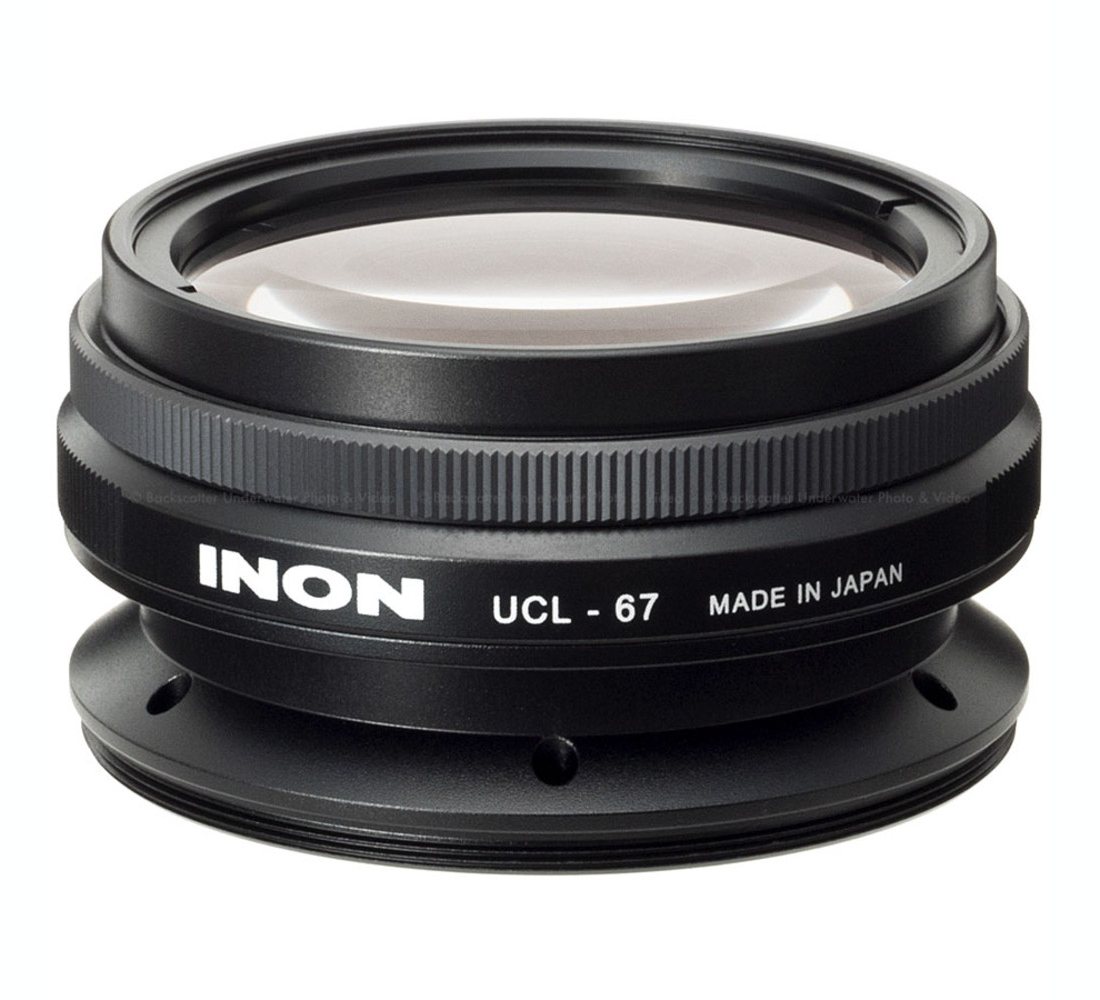 Inon UCL-67 M67 Underwater Close-up Macro Lens +15
Inon UCL-67 M67 Underwater Close-up Macro Lens +15
- Price A$ 549.00
-
 QYSEA Fifish E-GO - Next Generation Underwater Robot
QYSEA Fifish E-GO - Next Generation Underwater Robot
- Price A$ 11,999.00
-
 SeaLife Sea Dragon 5000+ with Color Boost™ Photo-Video light
SeaLife Sea Dragon 5000+ with Color Boost™ Photo-Video light
- Price A$ 1,049.00
-
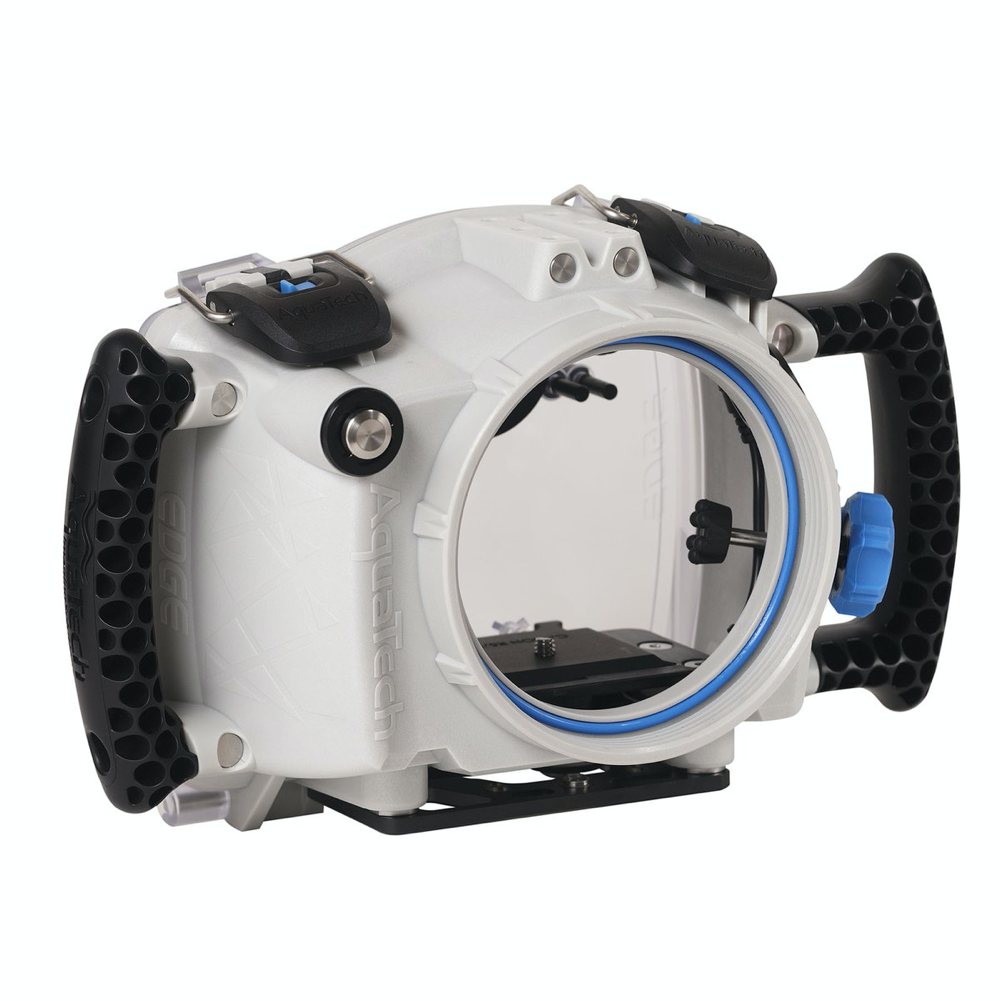 AquaTech EDGE Pro Camera Water Housings - Canon EOS mirrorless
AquaTech EDGE Pro Camera Water Housings - Canon EOS mirrorless
- Price A$ 2,149.00
-
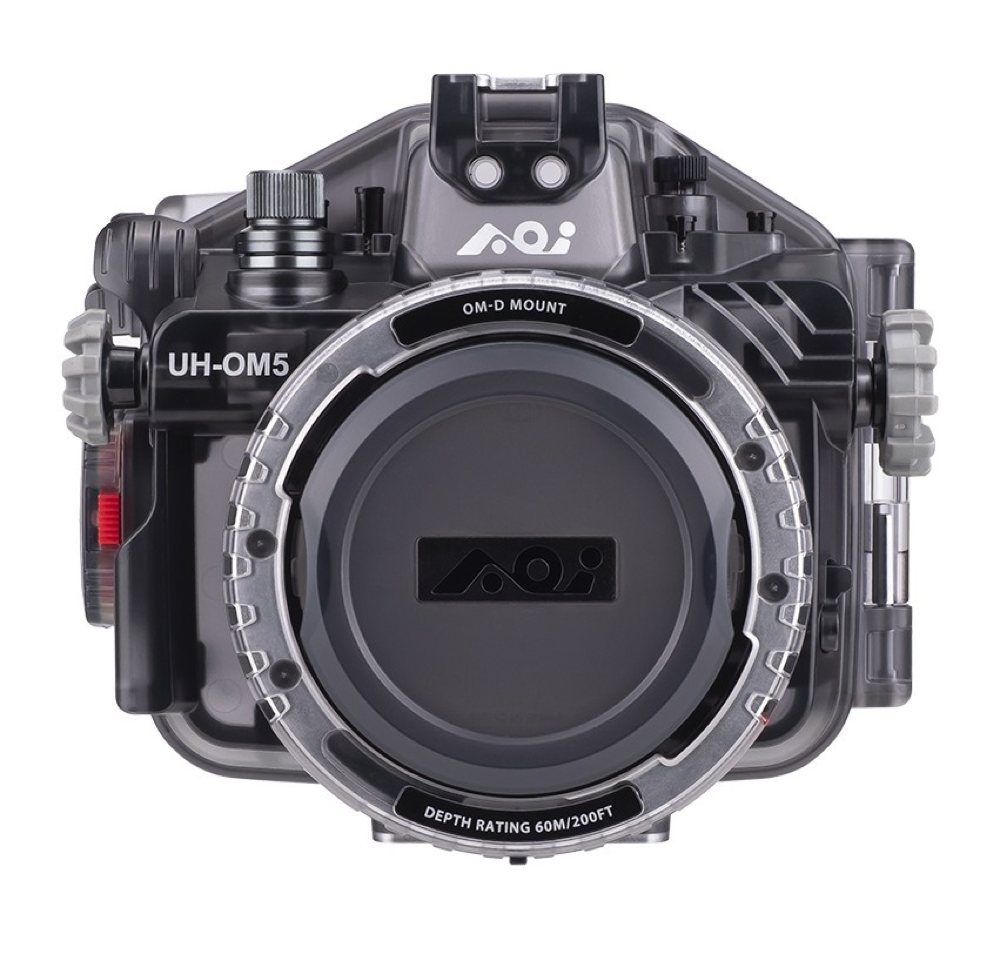 AOI UH-EM5III and UH-OM5 Underwater Housing for Olympus OM-D E-M5 III and OM System OM-5
AOI UH-EM5III and UH-OM5 Underwater Housing for Olympus OM-D E-M5 III and OM System OM-5
- Price A$ 1,469.00
-
 Fantasea FRX100 VA R Housing for Sony RX100 III / IV / V / VA - with optional vacuum system
Fantasea FRX100 VA R Housing for Sony RX100 III / IV / V / VA - with optional vacuum system
- Price A$ 799.00
-
 AOI UH-OM-1 Underwater Housing for Olympus and OM System OM1
AOI UH-OM-1 Underwater Housing for Olympus and OM System OM1
- Price A$ 1,699.00
In the Directory





